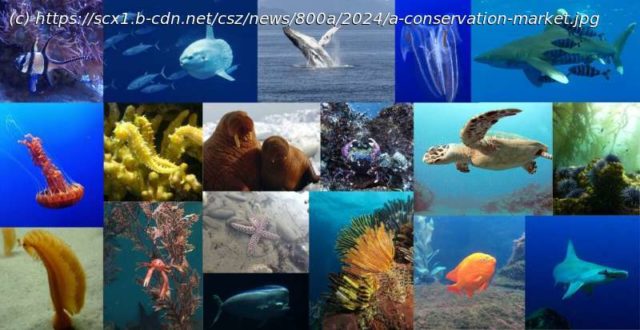The countries of the world have agreed: Our planet needs more protection from human activity. And with the globe facing an assortment of environmental crises, they realized the plan needed to be ambitious. Thirty-by-thirty was their proposal: protect 30% of the planet by 2030. But while conservation is popular in principle, the costs of actually enacting it often stall even the most earnest efforts.
The countries of the world have agreed: Our planet needs more protection from human activity. And with the globe facing an assortment of environmental crises, they realized the plan needed to be ambitious. Thirty-by-thirty was their proposal: protect 30% of the planet by 2030. But while conservation is popular in principle, the costs of actually enacting it often stall even the most earnest efforts.
Three researchers at UC Santa Barbara have proposed a market-based approach to achieving the 30×30 targets in the ocean. They tested whether a system that allowed countries to trade conservation credits could reduce costs, incentivizing nations to actually meet their goals. Allowing voluntary trade always reduced the cost of conservation, sometimes by more than 90%. The study, published in Science, is the first to draft and analyze a conservation market for achieving 30×30 targets in the ocean.
The 30×30 initiative is one aspect of the Convention on Biological Diversity, a multilateral treaty developed in the early 1990s. In fact, it’s target No. 3 of the larger Global Biodiversity Framework (GBF) adopted by the 196 countries that convened for the UN Biodiversity Conference in 2022.
It calls for the effective protection and management of 30% of the world’s terrestrial, freshwater, coastal and marine areas by the year 2030—a goal that many scientists say humanity must achieve to secure our planet’s long-term health. And while the GBF requires countries to commit to conservation targets, it does not outline which areas should be protected, how to do so inclusively, or how to pay for it.
«This project started just over four years ago», said co-author Juan Carlos Villaseñor-Derbez, who completed his doctorate at UCSB’s Bren School of Environmental Science & Management. At this point, countries were falling short of the 10% protection benchmark as they drafted plans for 30% protection.
«It seemed like most nations were genuinely committed to marine conservation, but that the costs of conserving were preventing some from engaging in it at all. At the same time, a lot of research had already shown that if you could get nations to cooperate around conservation, you could substantially reduce the costs of conserving.»
He and his co-authors realized the world needed an institution, policy or framework that could support this.
The cost of protecting acres of ocean is not the only aspect that differs from place to place. The ecological benefits of conservation also vary based on location. Achieving 30×30 in the ocean will require coastal nations to consider potential trade-offs associated with these protections.






